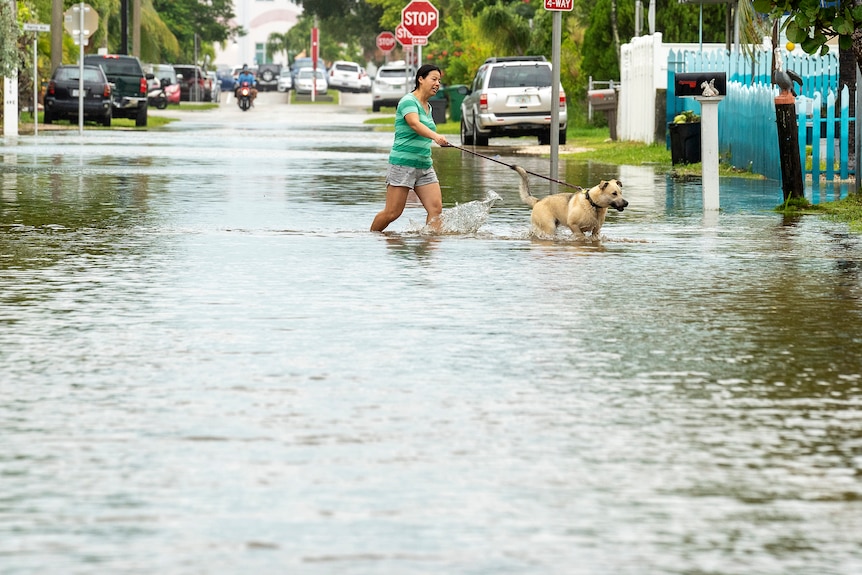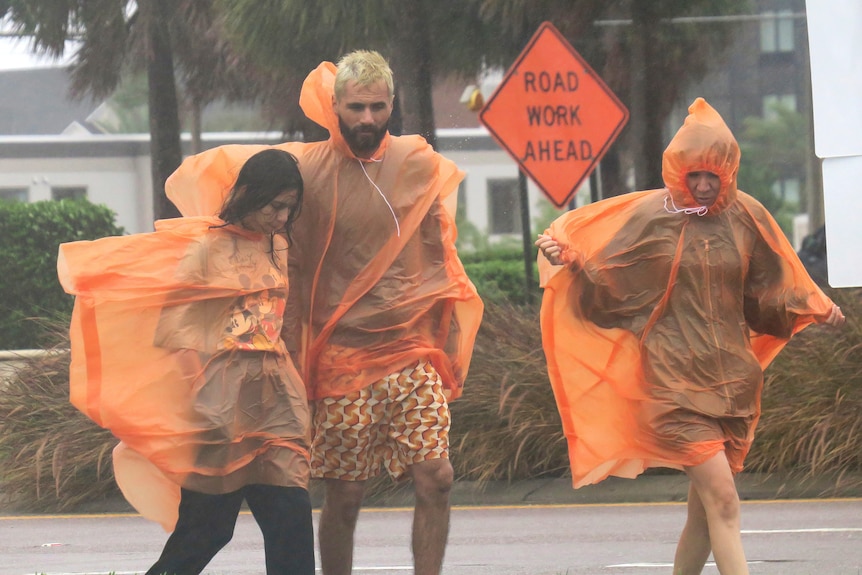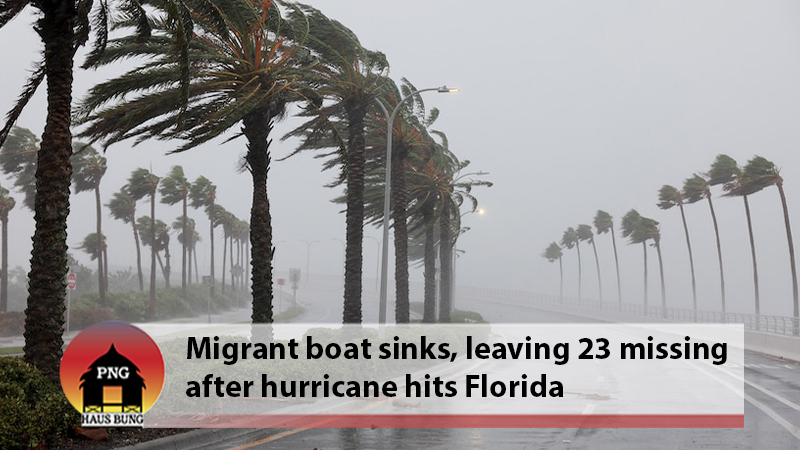Hurricane Ian has ploughed into Florida’s Gulf Coast with catastrophic force, assaulting the state with howling winds, torrential rain and a treacherous surge of ocean surf.
About 2.5 million people were ordered to evacuate south-west Florida.
The category four storm was heading inland, where it was expected to weaken, but residents in central Florida could still experience hurricane-force winds.
Before making its way through the Gulf of Mexico to Florida, Hurricane Ian tore into western Cuba as a major hurricane Tuesday, killing two people and bringing down the country’s electrical grid.
Ian is one of the most powerful storms on record to hit the United States, with sustained winds of up to 241 kilometres per hour, the US National Hurricane Center (NHC) reported.
The storm’s wind speeds put it just shy of a category five designation on the Saffir-Simpson scale, the most severe classification for storms.
The landfall zone is home to miles of sandy beaches, scores of resort hotels and numerous mobile home parks, a favourite with retirees and vacationers alike.
Space to play or pause, M to mute, left and right arrows to seek, up and down arrows for volume.
Power outages across Florida
In total, Ian has affected more than 830,000 customers so far, but power companies have restored some early outages.
Cuban officials said they had begun to restore some power on Wednesday after Hurricane Ian knocked out electricity to the entire country when it hit the island’s western tip on Tuesday.
In Venice, a coastal city of nearly 24,000 residents halfway between Tampa and Fort Myers, rain and wind were already intense before noon.
Authorities said it was now too late to get out of harm’s way and urged anyone still in the storm’s path to hunker down.
More than 524,000 homes and businesses were without power in Florida on Wednesday afternoon, according to local utilities.

Doug Coe was one of the town’s residents who chose to ignore warnings and stay put.
As he walked through rainfall on Wednesday morning to see how a friend’s home was weathering the storm, Mr Coe admitted to never experiencing a storm of this magnitude, but he was unfazed by the prospects of it ravaging his neighbourhood.
“You have to be vigilant because you never know what’s going to happen with it,” he said.
“I’m staying vigilant, but trying not to worry.”
Many streets were flooded, and the steady gale bent palm trees at 45 degree angles and shredded billboards and road signs.
Forecasters say Ian would unleash storm surges — wind-driven coastal flooding — of up to 3.7 meters along with intense thunderstorms and possible tornadoes.
“This is a devastating storm,” said Ken Graham, director of the National Weather Service.
“This is a storm that we will talk about for many years to come, an historic event.”
‘We’re secure and we’re prepared for this’
Hotels along Interstate Highway 75, which runs up and down Florida’s west coast, were jam packed with people seeking shelter.
The area is dotted with mobile home parks, which most residents had abandoned, taking refuge in local schools and other facilities being used as emergency shelters.

The area’s numerous assisted-living facilities were mostly evacuated, too.
Heartis Venice, an assisted living home north of Venice, was an exception.
Of its 107 residents, 98 decided to shelter in place and continue receiving care with help of staff and some family members, general manager Michelle Barger said.
The facility, opened two years ago, was built to withstand a category five storm.
“Our community is locked down. We’re secure and we’re prepared for this,” Ms Barger said, adding the facility was stocked up with enough food, water and medical supplies to last more than seven days.
“We feel pretty confident and safe, as do the residents and families and team members here.”
Migrant boat sinks, leaving 23 missing
US Border Patrol said on Wednesday that 23 people were missing off the coast of Florida after a Cuban migrant boat sank due to Hurricane Ian.
The Border Patrol agents responded to a migrant landing in Stock Island, Florida, officials said on Twitter, adding that the US Coast Guard had initiated a search operation for the 23 missing people.
Four Cuban migrants swam to shore after their vessel sank due to inclement weather, Chief Patrol Agent Walter Slosar said.
Local media said those four were hospitalised.
Source: ABC News

